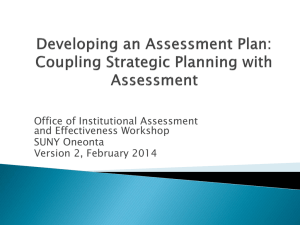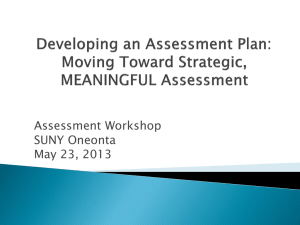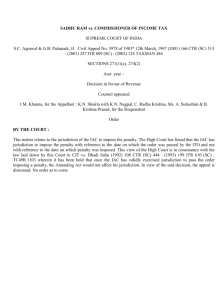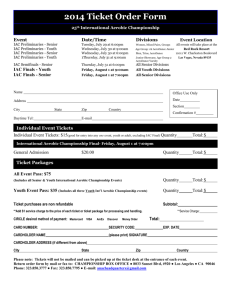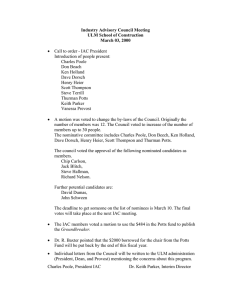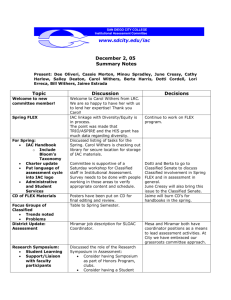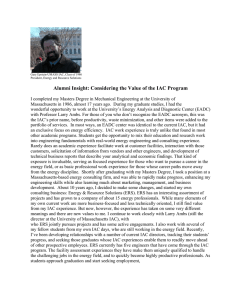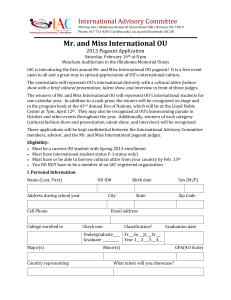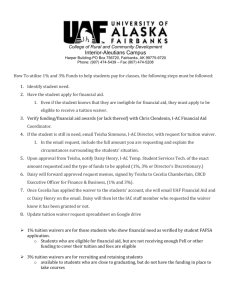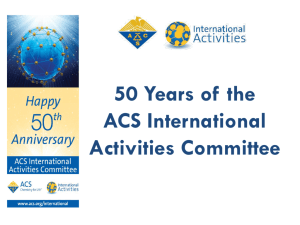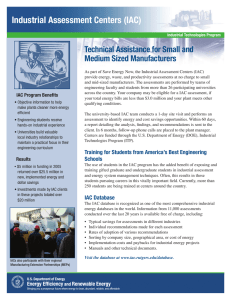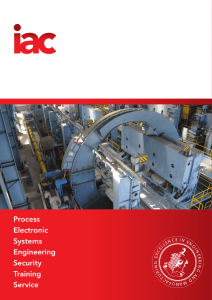Developing an Assessment Plan, Steps to
advertisement
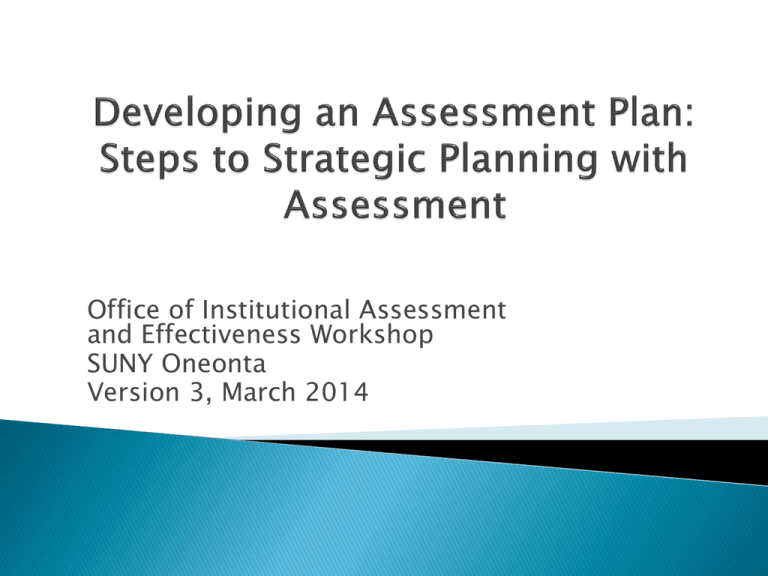
Office of Institutional Assessment and Effectiveness Workshop SUNY Oneonta Version 3, March 2014 Wade L. Thomas Associate Provost for Institutional Assessment & Effectiveness Development of College’s Action Plan for Planning and Assessment (Spring 2008), endorsed by College Senate (12/2008) and approved by President’s Cabinet (Spring 2009) Formation of Institutional Assessment Committee (IAC) (Spring 2009) ◦ Development of assessment guidelines by IAC and approval by President’s Cabinet (11/2009) [revised most recently in April 2013] Distribution of guidelines in 12/2009, with first 3-year plans due June 1, 2010 Submission of annual assessment reports in June 2011, 2012, and 2013, marking the end of the first 3-year cycle Commendations ◦ For the College’s investment and energy expended in developing institutional assessment protocols and processes - all contributing over time to the creation of a culture of assessment Significant accomplishments ◦ Completion of a full planning and assessment cycle by administrative units ◦ Establishment of operational and strategic objectives and formal assessment procedures throughout the College’s administrative structure ◦ Well-documented, staff-driven planning and assessment processes ◦ Appointment to IAC a shared responsibility between the College Senate and the administration Through IAC, unit objectives are aligned with institutional mission and goals, and efforts to implement the strategic plan are systematically assessed. Student Development units have done a good deal of assessment and have revised their practices based on their assessment of student learning outcomes. Assessment and planning must be integrally linked so with every assessment activity and/or conversation, stakeholders move to incorporate their results into actionable change. Review of assessment plans and reports indicate considerable variation with respect to quality. Assessment plans/reports in administrative units focus mostly on operational activities. “Provide necessary support and resources (organizational and fiscal) to expand IAC to assist administrative units to move beyond assessment of operational activities and to focus on more strategic objectives.” [Standard 7—Institutional Effectiveness] Pursue development of higher quality plans Deadline for draft plans to be submitted to Wade Thomas, interim associate provost, is Friday, March 21, 2014 Plans do not have to be entirely new, but should be the product of reflection and renewal and, most importantly, documented loop-closing actions that lead to continuous improvement What’s the Difference? Formulating strategy is not a science, it is an art. It is the art of asking intelligent questions and of thinking through issues in a creative way. It is the art of exploring possible answers, of experimenting with possible solutions, and of starting the thinking process all over again by questioning current practice. It requires thinking beyond the limits of traditional approaches to organizing and operating; and to do this decision makers must understand the difference between strategy and tactics. Alfred, R. Managing the Big Picture in Colleges and Universities (2005). Stop worrying about it—it’s an art, not a science Strategic planning processes vary, plans can have different levels of detail and look different ways Our institution has adopted standard definitions and reporting formats for the convenience of review, but should not compromise or suppress areas of distinction or unique features Strategic planning ◦ Fundamental and over-arching ◦ Focus on long-term implications ◦ The time to develop a strategic plan can be as little as several months to several years, depending on complexity and commitment to action ◦ The planning process identifies strengths and weaknesses, guides action and establishes expectations for timeframe covered by the plan (typically 3-5 years) Operational planning ◦ Affects the day-to-day implementation of strategic decisions ◦ More immediate and short-term ◦ Assumes much more detailed planning regarding who and how activities will be accomplished ◦ Provides a means to break down a larger strategic goals into workable tasks Strategic and operational planning (and objectives) are closely related ◦ Strategic objectives unlikely to be achieved if unit is unable to translate them into workable, operational plans ◦ But, operational objectives will lack cohesion and be out of sync with overall mission if they do not reflect strategic plan ◦ And, too much focus on operational objectives leads to units basically just documenting what they already knew they were doing – little new insight emerges Similarly, strategic and operational planning are NOT mutually exclusive ◦ Effective assessment plans will reflect both processes ◦ Problems arise when assessment planning relies too heavily on either Goals = Strategy Objectives = Tactics Action Plans and Outcomes = Operations Values statement Vision (What does your office/unit aspire to be in 3 to 5 years?) Mission Strategic goals Objectives Action items Concept of “competitive advantage” Intended to advance substantive and explicitly stated institutional goals (i.e. mission-driven) Forward-looking (and even aspirational) Meets identified need Perceived as important by unit members Is not itself “actionable” Identify and assess learning outcomes for student leaders. Create new and enhance present relationships with community resources. Perform wireless downloading of reports and arrest records. Collaborate with a broad range of faculty, staff, students, and community constituents in developing and implementing multicultural programs. Implement and maintain an electronic medical record system and keep accurate records. Electronically transfer hours-worked data to the payroll office on Thursdays. Respond to individual appointment requests within two days. Cooperate with Residential Life to adjoin programming where possible. Provide verification of student disability to faculty. Support talent development of employees through professional development, career advancement opportunities and better performance management. To foster a diverse, inclusive and welcoming employment environment on campus. To be recognized as the leader in employment services, policy, practices and compliance in the university system. Alfred, R. Managing the Big Picture in Colleges and Universities, Rowman & Littlefield (2005). Bresciani, M. Making Assessment Meaningful: What New Student Affairs Professionals and Those New to Assessment Need to Know (2011). (http://www.learningoutcomesassessment.org/documents/ABStudentAffairs.pdf) Institutional Assessment Committee Guidelines for Developing and Implementing Comprehensive Assessment Plans in Administrative Units. (http://www.oneonta.edu/middlestates/documents/IACGuidelines.pdf)
